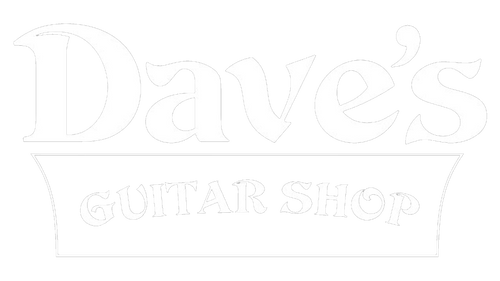The Telecaster is perhaps the most important guitar of all time. The world’s first production electric guitar helped spawn a cultural phenomenon that has persisted since its inception in 1951. It’s a guitar synonymous with pretty much every genre under the sun, and thousands of important records have featured its unmistakably versatile tone. We’re fairly certain you’ve kicked around buying one anyway, so let’s explain why you need a Tele.
Versatility
Let’s set the record straight; you don’t need to be chicken-pickin’ in a honkytonk to justify playing a Tele. The biggest misconception of the Telecaster is that they’re “country guitars,” despite being heard in Jazz, Contemporary, Hip Hop, Funk, Indie, Rock, and even Heavy Metal. You would be hard pressed to go to a local concert and not see at least one person using a Tele on stage, because of the range of sounds it can achieve.
You’ve probably heard a recording of a Tele and hadn’t realized it. Rage Against the Machine's "Killing in the Name Of” was recorded on a Tele, and that certainly isn’t the “stereotypical Tele tone.” The solo section of a forbidden guitar store classic, Stairway to Heaven, was also recorded with a Tele, and that too is a pretty far cry from what you “expect” a Tele to sound like.
A Tele is a workhorse guitar, and as such, does what the job requires, but why? They’re pretty unassuming with few bells and whistles compared to more modern appointed guitars.
Simplicity
Electric guitar has progressed a lot since the 1950's. Nowadays, there is no limit to the tonal options you can achieve on a modern electric guitar. Despite this, the science remains mostly the same. Electric guitars still feature magnetic pickups functioning as microphones to transduce string vibrations to sound, but now there are guitars loaded with so many pickup options that it can be somewhat overwhelming to know what it all does.
A traditional Tele layout only features two pickups with a three-way selector switch, a master volume and tone control. Realistically, you only get three choices; bridge pickup, both pickups, or neck pickup. These three positions sound radically different from each other, and with the master volume and tone controls, you can dial in the nuances of your tone directly from the control panel.
Additionally, the lack of “choice” on the Tele forces you to be more creative with how you play. Focusing on playing techniques like how you attack the strings with your pick becomes more a necessity than an exercise. Its simplicity makes it complicated, and in turn will make you a better guitar player for it.
Then again, maybe you’re the type of player who wants a lot of tonal options while playing. You like the push-pulls and phase shifting options to really optimize what a guitar can do. Well, we’ve got some really good news for you.
Mods!
Leo Fender was a tinkerer, and when he designed the first production electric guitar, he wanted to make sure that musicians could repair, modify, or change anything they wanted. He had the foresight to see that, eventually, guitar would become more than just playing an instrument. He knew that musicians had unique perspectives and preferences, and he built the Tele with that in mind.
Don’t like the way your neck feels? Take it off, and replace it with a different neck. Need more growl in the neck position? Remove the lipstick pickup and install a PAF-style. Want to get lap-steel tones but can’t play lap-steel? Just route out the whole back of your guitar and install a b-bender (I’d recommend leaving that to the professionals, but Dave’s repair department doesn’t do this specific mod.)
The point is that Teles are endlessly modifiable. If there is something you don’t like about the guitar, it’s generally something you can change with a few common household tools. Of course, there is a limit to what can be achieved at home on a kitchen table, but you can find someone to help with a mod if you want to do one. Guitar is about experimentation and creativity, and Teles are excellent platforms for that.
There are a Lot of Them
From a manufacturing perspective, Teles are pretty simple to construct. Master of the Telecaster, Brad Paisley, describes Teles as “nothing more than a cutting board, a baseball bat, and strings.” The simplicity is a major appeal, but that only tells half of the story.
The “T-style” is ubiquitous in the world of guitar. The roster of professionals who use a Tele are endless, but to name a few:
-
Bruce Springsteen

- Brad Paisley
- Ritchie Kotzen
- James Burton
- Jim Root
- Chrissy Hyde
- Christone “Kingfish” Ingram
- Chris Shiflett
- J Mascis
- And so on…
While all of these artists have certain modifications specific to their guitar, they’re simultaneously utilizing the same basic setup. This only scratches the surface, because all of these artists play Fender guitars. However, Fender isn’t the only manufacturer to make a Tele, more accurately, a “T-Style” guitar. While they might not technically be “Teles,” they certainly pay homage to the original design.
Nearly every guitar brand makes a T-Style guitar of some kind. Ibanez has the Talman, Surh has the Classic T, heck even Epiphone had the in the early nineties. Most underground boutique builders tend to start with a T-Style guitar as their flagship build, because of its simplicity and iconography. Leo Fender must have got it right on the first try for there to be so many builders with their own interpretations of a Tele.
They’re Cool

This might come off as vanity, but the Tele shape is just rad. It can be a little divisive amongst guitar players, but we’re no strangers to odd shaped instruments. A traditional Tele isn’t the most ergonomic shape, but that can be forgiven for the cool factor of holding one. After all, what is more Rock & Roll than Keith Richards rocking a Butterscotch Blonde 50’s Telecaster? Maybe getting one of your own?
Are you convinced? What Tele have you been drooling over lately? What is your favorite kind of guitar? Let us know in the comment section below!





Leave a comment